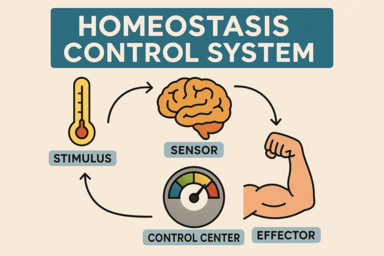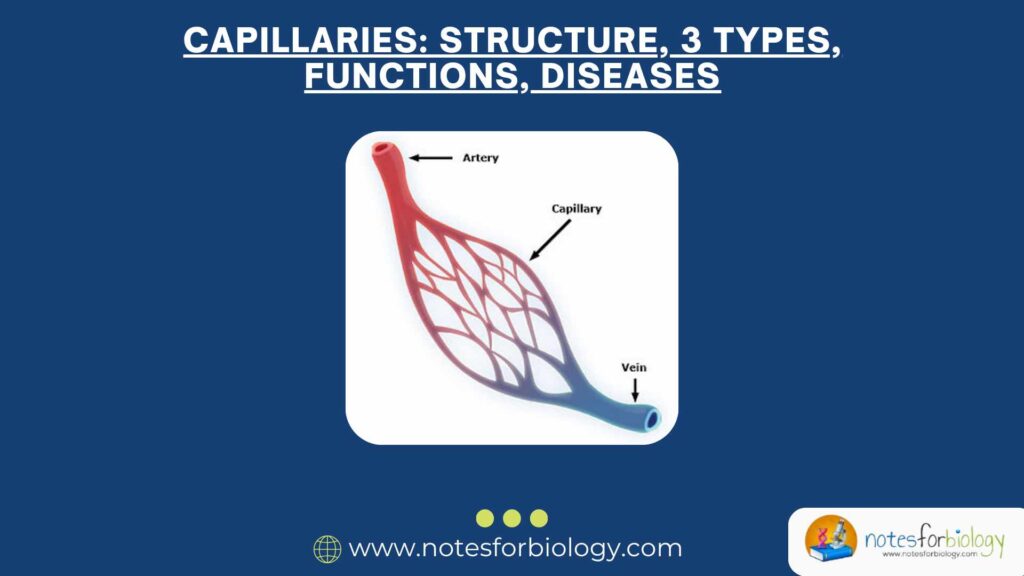Homeostasis is the process by which the body maintains a stable internal environment despite changes happening inside or outside the body. Homeostasis keeps important conditions such as body temperature, water balance, blood sugar, and pH at steady, healthy levels. This is very important because if these internal conditions move too far from their normal range, the body’s cells, tissues, and organs might stop working properly. The human body is constantly making small adjustments to keep everything balanced.

Table of Contents
Importance of Homeostasis
Maintaining homeostasis is necessary for the body’s survival and good health. If the body’s internal environment becomes too hot, too cold, too dry, or too acidic, it can affect the function of enzymes and other vital processes. Enzymes control most chemical reactions in the body, and they work best at a certain temperature and pH. If these conditions change too much, enzymes may stop working or become damaged. Serious health problems like dehydration, heat stroke, diabetes, or organ failure can occur if homeostasis is not maintained.
Components of the Homeostatic Control System
To keep the internal environment stable, the body uses a control system made up of three important parts: receptors, a control centre, and effectors. These parts work together in a continuous cycle to detect changes and correct them.
Receptors (Sensors)
Receptors are special cells or tissues that detect changes in the environment, called stimuli. They are found throughout the body in places like the skin, blood vessels, and organs. When a receptor detects a change, such as a rise in temperature or a drop in blood pressure, it sends this information to the control centre for processing.
Example: Temperature receptors in the skin can detect when it is too hot or too cold.
Control Centre (Coordinator)
The control centre is usually the brain (particularly the hypothalamus) or the spinal cord. It receives the information from the receptors and compares it to the body’s normal condition, known as the set point. If a change is detected, the control centre decides what action needs to be taken and sends instructions to the effectors.
Example:
If the body’s temperature rises above normal, the hypothalamus sends signals to the sweat glands to produce sweat and cool the body down.
Effectors (Responders)
Effectors are parts of the body like muscles or glands that carry out the response to correct any changes and bring the internal environment back to normal. They follow the instructions given by the control centre.
Examples:
- Sweat glands produce sweat to cool the body.
- Muscles contract to make the body shiver and produce heat when it’s too cold.
Types of Feedback Mechanisms
The body uses feedback mechanisms to control homeostasis and respond to changes in the environment. There are two main types: negative feedback and positive feedback.
Negative Feedback
Negative feedback is the most common and important type of feedback mechanism in the body. It works by reversing any changes that move conditions away from the normal range. When a receptor detects a change, the control centre processes the information and sends signals to the effectors to counteract the change and bring the condition back to normal.
Examples of Negative Feedback:
- Temperature control: When body temperature rises, receptors in the skin detect it, and the brain sends messages to the sweat glands to produce sweat. This cools the body down. If the temperature drops, muscles start to shiver to produce heat.
- Blood glucose control: After eating, blood sugar levels rise. The pancreas releases a hormone called insulin, which helps cells absorb glucose, reducing blood sugar levels to normal.
Positive Feedback
Positive feedback works by increasing or amplifying a change instead of reducing it. It pushes conditions further away from the normal range, but only in specific situations, and then stops once a certain event is complete.
Examples of Positive Feedback:
- Childbirth: As the baby’s head presses against the cervix, stretch receptors send signals to the brain. The brain releases the hormone oxytocin, which causes stronger uterine contractions. The more the baby moves down, the more oxytocin is released, until the baby is born.
- Blood clotting: When a blood vessel is injured, platelets stick to the wound and release chemicals that attract more platelets, quickly forming a clot to stop bleeding.
Process of Homeostasis: Step-by-Step
The process of homeostasis involves a series of steps that help the body maintain a stable internal environment. First, a change or disturbance in the environment, known as a stimulus, is detected by special sensors called receptors. These receptors send the information to the control centre, usually the brain or spinal cord, which compares the current condition to the normal level and decides how to respond.
The control centre then sends signals to effectors, such as muscles or glands, which take action to correct the change. Once the internal condition returns to normal, the system keeps monitoring for any further changes, ensuring the body stays balanced and healthy.
- A stimulus occurs — a change in the environment is detected.
- Receptors detect the change and send information to the control centre.
- The control centre processes the information and decides how to respond.
- Effectors carry out the response to correct the change.
- Feedback is sent back to the control centre about the new condition.
- The process repeats as needed to maintain balance.
Summary of the Control System
| Part | What It Does | Example |
|---|---|---|
| Receptor | Detects changes in the environment | Temperature sensors in skin |
| Control Centre | Decides what action to take | Brain (Hypothalamus) |
| Effector | Carries out the action to fix the problem | Sweat glands or muscles |
Conclusion
In summary, homeostasis is the process by which the human body keeps its internal environment stable and balanced despite changes happening inside or outside the body. Homeostasis is controlled by a system made up of receptors, a control centre, and effectors. Most of the time, the body uses negative feedback to bring things back to normal, while positive feedback is used in special situations. This continuous system of detecting, correcting, and monitoring changes is essential for keeping the body healthy and allowing its cells and organs to function properly.
Frequently Asked Questions (FAQ)
What is Homeostatic Control System?
A homeostatic control system is a system in the body that helps maintain stable internal conditions (like temperature, pH, or blood sugar) despite changes in the external environment.
What are the types of control system in homeostasis?
There are two main types:
Negative feedback system — reverses a change to keep conditions stable.
Positive feedback system — enhances a change, usually for a short, specific purpose (like childbirth).
What is the principle of homeostasis?
The principle of homeostasis is to maintain a constant internal environment by detecting changes and making adjustments to bring conditions back to normal.




